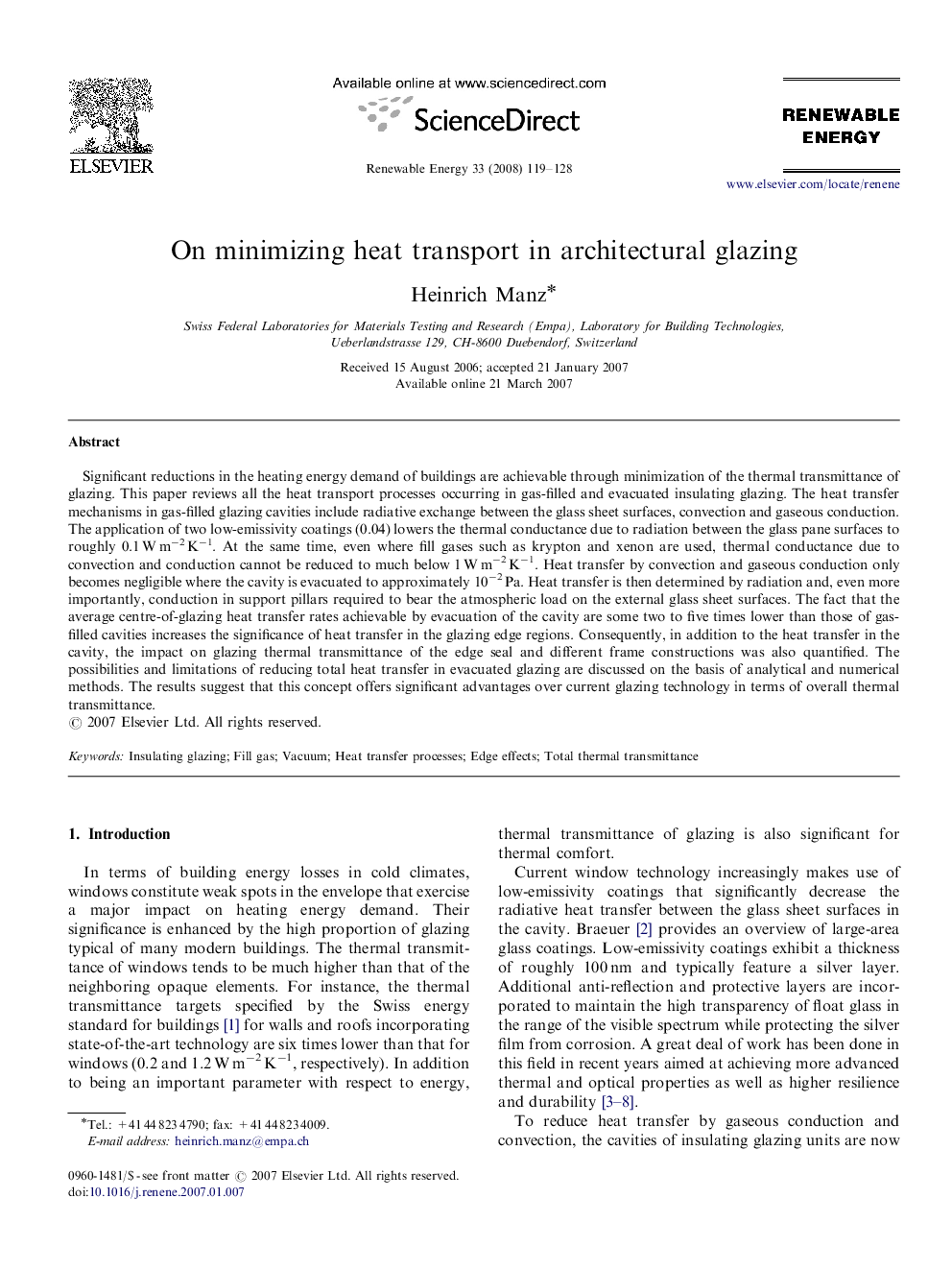| کد مقاله | کد نشریه | سال انتشار | مقاله انگلیسی | نسخه تمام متن |
|---|---|---|---|---|
| 302696 | 512547 | 2008 | 10 صفحه PDF | دانلود رایگان |

Significant reductions in the heating energy demand of buildings are achievable through minimization of the thermal transmittance of glazing. This paper reviews all the heat transport processes occurring in gas-filled and evacuated insulating glazing. The heat transfer mechanisms in gas-filled glazing cavities include radiative exchange between the glass sheet surfaces, convection and gaseous conduction. The application of two low-emissivity coatings (0.04) lowers the thermal conductance due to radiation between the glass pane surfaces to roughly 0.1 W m−2 K−1. At the same time, even where fill gases such as krypton and xenon are used, thermal conductance due to convection and conduction cannot be reduced to much below 1 W m−2 K−1. Heat transfer by convection and gaseous conduction only becomes negligible where the cavity is evacuated to approximately 10−2 Pa. Heat transfer is then determined by radiation and, even more importantly, conduction in support pillars required to bear the atmospheric load on the external glass sheet surfaces. The fact that the average centre-of-glazing heat transfer rates achievable by evacuation of the cavity are some two to five times lower than those of gas-filled cavities increases the significance of heat transfer in the glazing edge regions. Consequently, in addition to the heat transfer in the cavity, the impact on glazing thermal transmittance of the edge seal and different frame constructions was also quantified. The possibilities and limitations of reducing total heat transfer in evacuated glazing are discussed on the basis of analytical and numerical methods. The results suggest that this concept offers significant advantages over current glazing technology in terms of overall thermal transmittance.
Journal: Renewable Energy - Volume 33, Issue 1, January 2008, Pages 119–128